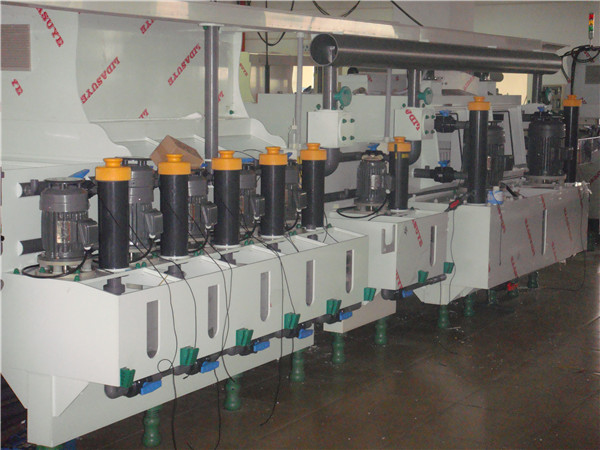Medi . 29, 2024 09:47 Back to list
HDPE Tube Applications and Advantages in Various Industries and Environments
The Versatility of HDPE Tubes An Overview
High-Density Polyethylene (HDPE) tubes have emerged as a preferred choice in various industries due to their remarkable properties and versatility. Utilizing HDPE tubes offers an array of benefits that cater to different applications, from agricultural irrigation to industrial piping systems. In this article, we will explore the characteristics, advantages, applications, and environmental impact of HDPE tubes.
What is HDPE?
HDPE is a thermoplastic made from petroleum, characterized by its high strength-to-density ratio. The wall thickness of HDPE tubes provides excellent resistance to impact, making them durable and capable of withstanding harsh environmental conditions. They are manufactured through a process called extrusion, where molten plastic is forced through a die to create continuous lengths of tubing.
Key Properties of HDPE Tubes
1. Chemical Resistance One of the significant advantages of HDPE tubes is their resistance to a wide range of chemicals. This property makes them suitable for transporting various fluids, including acids, alkalis, and salts, without fear of degradation.
2. Lightweight yet Strong HDPE tubes are considerably lighter than metal alternatives, making them easier to handle and install. Despite their lightweight nature, they boast high tensile strength, which allows them to endure significant pressure.
3. Flexibility HDPE tubes are highly flexible, enabling them to bend without breaking. This feature is particularly useful in applications where movement or shifting of the ground occurs, such as in construction sites or earthquake-prone areas.
4. UV Resistance When properly treated, HDPE tubes can resist damage from ultraviolet (UV) light, guaranteeing longevity when used outdoors.
5. Low Maintenance HDPE tubes do not rust or corrode, minimizing the need for maintenance over time. This durability translates into cost savings in the long run.
Applications of HDPE Tubes
hdpe tube

The applications of HDPE tubes are vast and varied. Here are a few notable areas of utilization
- Agriculture In the agricultural sector, HDPE tubes are extensively used for irrigation systems. Their ability to withstand chemicals and UV rays makes them ideal for transferring water and fertilizers without deterioration.
- Construction The construction industry utilizes HDPE tubes for drainage and stormwater management systems. Their flexibility allows for easy installation, even in challenging terrains.
- Water Supply HDPE tubes are increasingly being adopted for potable water supply lines due to their non-toxic nature and resistance to chemicals, ensuring safe drinking water transport.
- Mining and Industrial Applications HDPE tubes are used in various mining operations for the transportation of slurries and chemicals, proving effective under high-pressure conditions.
- Telecommunications They also find applications in the telecommunications sector for protecting cables against external elements.
Environmental Impact
As awareness of environmental sustainability rises, the role of HDPE in reducing the carbon footprint becomes increasingly significant. HDPE tubes are fully recyclable and can be reused multiple times. Innovations in recycling technologies have further enhanced the environmental benefits of HDPE, enabling the recovery and reprocessing of materials that would otherwise contribute to landfill waste.
Moreover, the longevity and durability of HDPE tubes mean that they require fewer replacements compared to traditional materials, leading to reduced demand for raw materials and lower energy consumption in manufacturing processes.
In conclusion, HDPE tubes have proven their worth across numerous industries due to their unique properties and advantages. Their lightweight, chemical-resistant, and durable nature makes them an ideal choice for a variety of applications, promoting efficiency and reducing environmental impact. As technology advances and industries seek sustainable solutions, the reliance on HDPE tubes is likely to grow, solidifying their place as a top material in modern engineering and construction practices.
-
High-Quality PPR Pipes and Fittings Durable ERA PPR & PVC PPR Solutions
NewsJul.08,2025
-
Black HDPE Cutting Board - Durable, Non-Porous & Food Safe HDPE Plastic Cutting Board
NewsJul.08,2025
-
High-Quality CPVC Panel Durable HDPE & PVC Panels Supplier
NewsJul.08,2025
-
Double PE Welding Rod Supplier - High Strength, Durable & Versatile Welding Solutions
NewsJul.07,2025
-
High-Quality PVC-O Pipe Supplier Durable 75mm PVC Pipe & Connections Leading PVC Pipe Company
NewsJul.07,2025
-
HDPE Drainage Pipe Supplier – Durable & Corrosion-Resistant Solutions
NewsJul.06,2025

